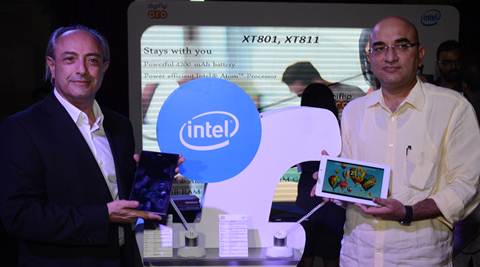
Widening its portfolio of devices under the Digiflip Pro brand Flipkart has launched three new Intel-powered tablets. The new range includes a 7-inch Wi-Fi only ET701 as well as 8 and 9 inch tablets with both Wi-Fi and 3G versions.
In fact, the seven inch tablet will be among the most affordable in the market with a price tag of just Rs 5,999. It has an 1024x600p IPS display and is powered by a 1.2GHz Intel Atom Z2520 processor running Android Jelly Bean. The tablet has 1GB RAM and 8GB internal storage expandable by up to 32GB. It comes with a 2800 mAH battery.
The 8-inch XT 811 and XT 801 will be powered by 2 GHz Intel Atom Z2580 processors and have a 1280 x 800p HD screen. It will be powered by a 4200 mAH battery and will have 16GB storage. The Wi-Fi only version will cost Rs 8,999, while the version with 3G calling will cost Rs 10,000.
The 8.9-inch XT 911 and XT 901 come with a Full HD screen and has a larger 6500 mAh Li-polymer, but has the same processor as the 8-incher. The Wi-Fi model has been priced at Rs 13,999, while the 3G version will cost Rs 2,000 more.
Michael Adnani, VP – Retail & Head – Brand Alliances, Flipkart, told IndianExpress.com that the idea was to offer something for everyone who can afford to spend on a tablet. Fipkart had launched another Android device a couple of months back and Adnani said the new devices made their specrtum pretty wide and plugged all the gaps. “At the moment the premium is all about quality and not the price as before. Our tablets offer affordability and value,” he added.
Sandeep Aurora, Director Marketing and Market Development, Intel South Asia said it is good see that the low quality tablets which had been clouding user judgement for long has started exiting the market. “We can now ensure that the customer is wowed by their first tablet experience, unlike before,” he said, adding that the market will keep evolving till it figures out what are the types of tablets that will sell.
Aurora said the trend of tablets with calling was still quite storng in India as a lot of Indian look at this feature as a fail safe mechanism when their primary phone has an issue. Adnani added that the tablet market in India was unlike the rest of the world. “Our effort is to develop a tablet market for the India consumer that solves his specific needs and problems.”
